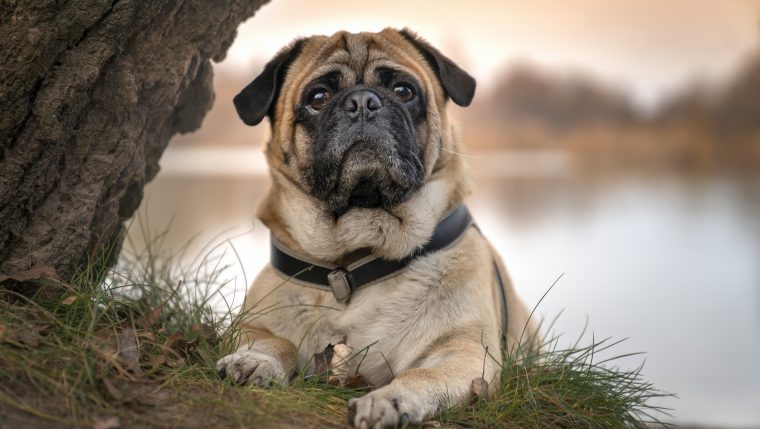
There’s a new, old dog on the block: the Retro Pug. Sometimes known as the Retromop, this throwback dog breed is growing in popularity. But, many aren’t familiar with the breed or why their unique appearance is desirable. There are plenty of good things to love about the Retro Pug — so much so that you may choose them over the modern-day iteration of the breed.
What’s the difference between Retro Pugs and regular Pugs?
The Pug has been bred for centuries, and in that time, they’ve undergone a lot of changes. Today, the Pug’s face is extremely short, often accompanied by their trademark snorting, wheezing breaths. However, past versions of the breed had a slightly longer snout. They can still be recognized as the same breed we have today, but with fewer issues breathing and a more defined snout. The goal of breeding the Retro Pug was to develop a healthier dog that looks more similar to the “old” Pug.
Retro Pugs are Pugs that have been crossbred out to other breeds in order to develop a longer snout. Commonly, the Retro Pug has ancestry from the Jack Russell Terrier. Some breeders also use the Beagle, or both breeds, for Retro Pug breeding programs. It’s rare that your dog will be a direct cross between a Pug and another breed; more likely, your dog will have had a separate breed as a great-grandparent. Still, the Retro Pug does not qualify as a “purebred” Pug, so you won’t be able to enter them in AKC competitions.
Retro Pugs are slightly larger than average Pugs. Retro Pugs tend to have larger, floppy ears. They also have pronounced snouts that allow them to breathe easier. They can also be found in more colors than fawn and black, the only colors allowed in the Pug’s breed standard, as they are in technicality a mixed breed.
Are Retro Pugs healthier than regular Pugs?
In short, yes, Retro Pugs will be healthier than regular Pugs. Of course, every dog is different, and individual Retro Pugs may not live as long as an average Pug. Some Retro Pugs have been known to exceed 18 years of age. But Retro Pugs won’t face as many of the issues associated with brachycephalic (short-snouted) breeds. In Pugs, this often presents as struggling to take breaths, dental issues, wheezing, and eye problems due to a lack of space in the skull. You’re unlikely to find these issues as prevalently in a Retro Pug. You can likely expect a Retro Pug to have a healthier, longer life than the Pug, with fewer vet visits related to breed-specific issues.
Retro Pugs do often come along with a hefty price tag. If you want a healthy Pug in your life, but can’t afford a Retro Pug, consider adopting a Pug mix from a shelter or rescue.









